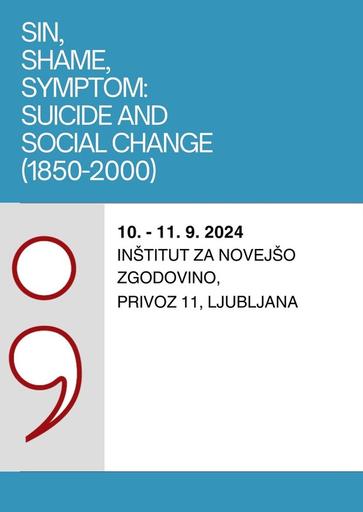/
Dogodki
/
Konference
Silence, suicide, and the question of trauma


To delo avtorja Peter Leese je ponujeno pod Creative Commons Priznanje avtorstva-Nekomercialno-Deljenje pod enakimi pogoji 4.0 Mednarodna
Datoteke (1)
Opis
In the taxonomy of suicide some causes seem clear and unambiguous, while in other instances there is radical unknowability. This paper considers two apparent self-killings to consider the link between traumatic event and self destruction. This is also an enquiry into the nature of traumatic memory, its ongoing effects, and the difficulty of establishing a link between supposed event and subsequent outcome. In the better know instance of Primo Levi (1919-87) the reading of a life through its most known themes—reflections on survival in the Nazi concentrations camps—has led biographers and others to assume a link to his sudden, unwitnessed death. The actual circumstances of Levi’s end, though, leave grounds for doubt. In the death of Robert Vas (1931-78) the circumstances are also less than certain. The silence that accompanies both deaths, the absence of witness or explanation, creates a speculative void into which observers place their own assumptions of victimhood and loss. A similar logic is often applied to the originary traumatizing event which is assumed to cause ongoing mental suffering. Here I reflect on the radical unknowability of suicide in certain circumstances, and the ways in which this might help us to see those subjected to insufferable events and involuntary memories not only as victims. The tragic loss of suicide cannot be made good by reinterpreting its point of origin, but a reconsideration of causality, a sense of ambiguity and uncertainty, may also help us understand the true nature of traumatic memory.
Metapodatki (12)
- identifikatorhttps://hdl.handle.net/11686/71060
- naslov
- Silence, suicide, and the question of trauma
- avtor
- Peter Leese
- soavtor
- Ana Cergol Paradiž (mod.)
- predmet
- samomori
- travma
- spomini
- psihologija
- opis
- In the taxonomy of suicide some causes seem clear and unambiguous, while in other instances there is radical unknowability. This paper considers two apparent self-killings to consider the link between traumatic event and self destruction. This is also an enquiry into the nature of traumatic memory, its ongoing effects, and the difficulty of establishing a link between supposed event and subsequent outcome. In the better know instance of Primo Levi (1919-87) the reading of a life through its most known themes—reflections on survival in the Nazi concentrations camps—has led biographers and others to assume a link to his sudden, unwitnessed death. The actual circumstances of Levi’s end, though, leave grounds for doubt. In the death of Robert Vas (1931-78) the circumstances are also less than certain. The silence that accompanies both deaths, the absence of witness or explanation, creates a speculative void into which observers place their own assumptions of victimhood and loss. A similar logic is often applied to the originary traumatizing event which is assumed to cause ongoing mental suffering. Here I reflect on the radical unknowability of suicide in certain circumstances, and the ways in which this might help us to see those subjected to insufferable events and involuntary memories not only as victims. The tragic loss of suicide cannot be made good by reinterpreting its point of origin, but a reconsideration of causality, a sense of ambiguity and uncertainty, may also help us understand the true nature of traumatic memory.
- založnik
- Inštitut za novejšo zgodovino
- datum
- 11. 09. 2024
- tip
- video
- jezik
- Angleščina
- jeDelOd
- pravice
- licenca: ccByNcSa
